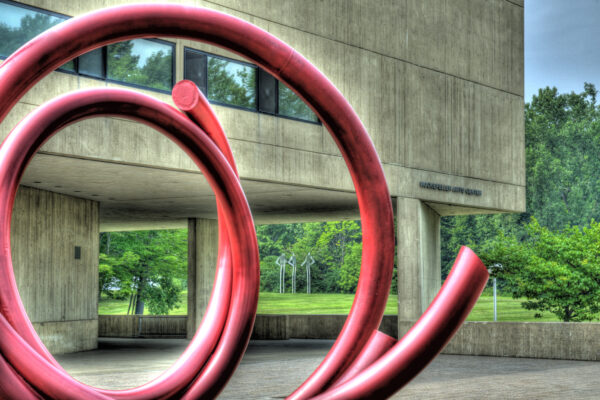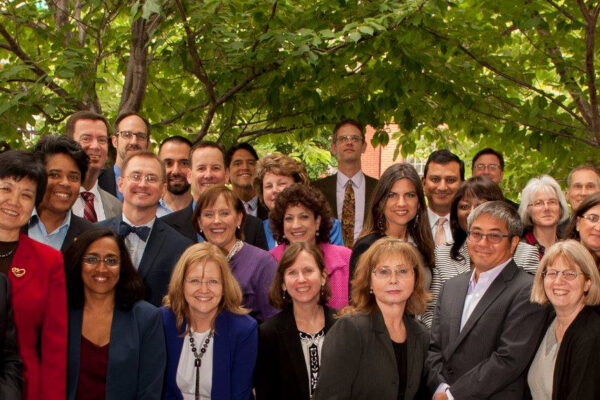In the upcoming months, John Marx will be blogging about his year in the ACE Fellows Program in a series of posts centered on the idea of “place” in American higher education leadership.
The Fellows Program gives participants the opportunity to immerse themselves in the study and practice of leadership and to experience the culture, policies, and decision-making processes of another institution.
Marx, professor and chair of the English Department at University of California, Davis, is spending his year working with President Elizabeth Hillman at Mills College in Oakland, California.
You know intellectually that higher education in the United States is composed of some 5,000 remarkably diverse institutions. Still, it is always surprising to be confronted by the differences between one college or university and another when setting foot on a new campus.
That’s the situation facing this year’s ACE Fellows, who are just starting to shadow leaders at host institutions in this one-of-a-kind professional development program.
Consider Penny Yee, associate dean of faculty and professor of psychology at Hamilton College (undergraduate population 1,850) in Clinton, New York (population 1,942). Yee arrived a couple of weeks ago at the University of Washington (student population 46,686) in Seattle (estimated population 724,745), where she will be working with President Ana Mari Cauce.
Instead of the bucolic setting of a college town embracing autumn in upstate New York, Yee found herself on an urban campus that is growing as fast as it can. “Construction is everywhere,” she reports.
Yee quickly learned that President Cauce, meanwhile, is responsible not only for running “the traditional academic units, but also the medical school,” which includes satellite hospitals as well as community clinics, and plays a part in supporting medical education across neighboring states.
I also moved from country to city for my fellowship year, but my journey was the opposite of Yee’s in terms of scale. Where she went from small private college to big public university, I went from the University of California, Davis to Mills College, a liberal arts institution with an undergraduate mission of serving students who self-identify as women or non-binary. Close in terms of geography (the drive takes a little over an hour), these two institutions are light years away in broader terms.

Yolanda Gibson stayed relatively close to home as well but has had no trouble recognizing important differences between her host, the fast-growing public Towson University near Baltimore, and her home, Marymount University in Arlington, Virginia, the Catholic university where she serves as associate dean of first-year experience.
Cultural differences between the two universities immediately caught Gibson’s eye. Towson’s boisterous manner for receiving first-year undergraduates was a revelation: “During convocation, the marching band and other student groups ensured that the new students felt welcomed and were ready to kick off the academic year.”
Few Fellows would seem likely to experience as much institutional dissonance as Doria “Kathy” Stitts, associate provost and dean for University College and Lifelong Learning at the historically black constituent institution Winston-Salem State University in North Carolina.
Stitts’s host is St. Mary’s College of Maryland, a public honors college. The most visceral difference between these institutions lies in their “look and feel,” Stitts explains. St. Mary’s shares its campus with a living history museum, the reconstruction of Maryland’s first colonial settlement. Walk across the quads and you’ll be struck by the quiet, says Stitts. “There are no bands, cheerleaders practicing for football games (no football-LOL).”
I am keeping special tabs on Lowell Davis’s experience; he headed west to my home campus of UC Davis from his job as associate vice chancellor for student success at Western Carolina University, a regional comprehensive university in North Carolina.
Davis’s first weeks with Chancellor Gary May and Provost Ralph Hexter have required him to grapple with the “scope of a large research institution” and the particularity of faculty governance in the UC system. In addition, he is gradually coming to grips with the uncanny feeling that “there are randomly eggs (egg heads) [scattered about the] campus.” These are, indeed, the “Eggheads” that UC Davis locals know and love, distinctive public sculptures that are the work of former artist and professor Robert Arneson.
The differences that these and other Fellows are encountering represent challenges for academic leadership, which I’ll be exploring on this blog in the coming months. Potential topics include how leaders moving from one type of institution to another negotiate that change; how leaders learn from other kinds of institutions (especially those radically different from their own); how location and region shape institutional distinction; and how changes in higher education as a whole have the potential to alter longstanding differences (between public and private, for instance, or between two-year and four-year institutions).
This is no small task. As Amanda Ripley observed recently in The Atlantic, “America basically contains 50 different higher-education systems, one per state, each with public, private, and for-profit institutions, making generalizations all but impossible.” This variety means fundamental variables like college cost become nearly impossible to assess across the sector as a whole.
Compared to its global competitors, Ripley explains, “The U.S. does relatively well on measures of access to college, but the price varies wildly depending on the place and the person.” The result is that higher education’s diversity represents a challenge for students and parents as much as for institutional leaders.
While attending to the great range in colleges and universities across the United States, it is vital to remember what such institutions share.
Among the commonalities pointed out by the Fellows I interviewed for this post are the desire for greater demographic diversity among student and staff populations, a sense of precariousness felt by far too many students, the anxieties of faculty starting their careers at a moment of high volatility, and the need for leadership to think hard about succession planning. The latter is an issue of special concern to ACE; its recent American College President Study revealed that nearly 60 percent of college presidents are over 60 years old.
Most challenging of all perhaps is the demand that leaders pay ever better attention to highly segmented constituencies both on and off campus. Stitts observed that leaders on both her host and home campus know they “have to stay abreast of the intellectual, political, and social environments in order to remain relevant and competitive.” No matter where you are, the news cycle these days is demanding.
Collaboration can help, and that’s one of the other early lessons for those of us in this year’s class of ACE Fellows. Even as we settle into our host campuses, we are sharing experiences and discussing thought-provoking headlines. We are building a network, and in future posts I’ll look forward to saying more about what such communication can do to bridge differences.
For now, it’s worth noting one more thing this year’s Fellows share: gratitude toward both our homes and our hosts. Looking back on her first weeks at Towson, Gibson sums up the experience thus far: “I feel I truly fit into the university.” In spite of, or perhaps because of institutional differences, an ACE Fellowship host institution becomes a new kind of home.
If you have any questions or comments about this blog post, please contact us.


